Thai vegetables are various fresh produce that add vibrant flavors to Thai cuisine. From special winged beans to bean sprouts, these foods play a certain role in soups, curries, stir-fries, and salads alike.
With 11 common veggies in Thailand here, you’ll discover the characteristics and types of these vegetables with their culinary versatility and even health benefits. Many of them are also well-loved veggies in Asia.
This guide also delves into common vegetables frequently featured in traditional Thai dishes, enriching your understanding of their culinary significance.
So join me in the world of Thai vegetables and uncover their delicious potential.
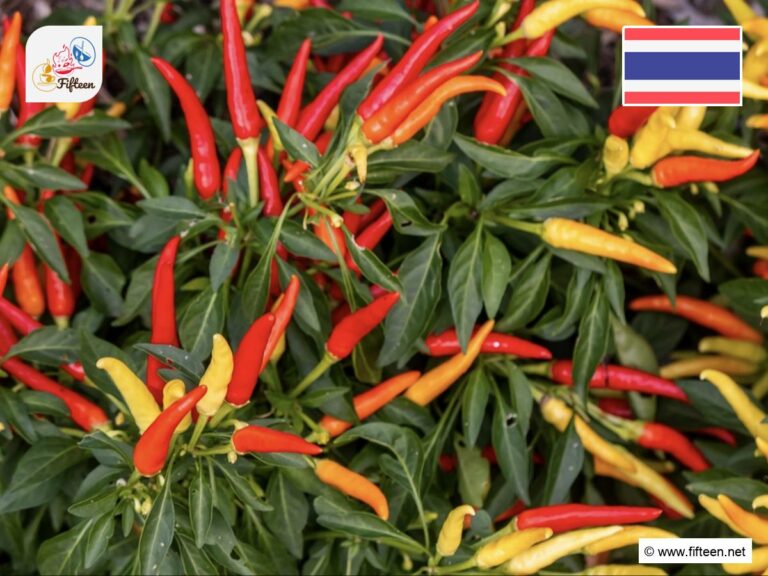
Names of 11 Common Thai Vegetables
There are 11 popular vegetables used in Thai cuisine. They feature different types, flavors, and textures, and other facts. Keep reading and use the filter if you want to search for your ideal ones quickly!
Mung Bean Sprout
- For Dishes
Mung bean sprouts, or tua ngawk in Thai, are tender shoots of germinated mung beans. They are commonly used in many Thai dishes, such as salads, stir-fries, and soups, to add a refreshing crunch.
Mung bean sprouts have a very mild taste, making them pair well with strong Thai spices and sauces. Mung bean sprouts are also low in calories but high in essential nutrients. You can easily find them in most Thai markets.
Winged Bean
- For Dishes
Winged bean, or tua poo in Thai, is a beloved green bean with distinct ridged edges resembling small wings.
Tua poo is highly versatile and can be eaten raw, steamed, or stir-fried. It’s commonly found in Thai salads, soups, and curries, providing a crunchy texture and a slightly nutty flavor.
Every part of the plant is edible, from the leaves to the flowers and roots, making it a highly sustainable crop in the country.
Bitter Melon
- For Dishes
Bitter melon, or marah, is a unique vegetable commonly found in Thai cuisine and other Southeast Asian delicacies. Bitter melon is also a favorite Vietnamese veggie.
Overall, bitter melon is a green, warty gourd famous for its bitter taste and bumpy texture. It’s an ideal component in stir-fries, soups, and curries that complement the rich, spicy, and savory elements of other Thai foods.
Its bitterness can be tempered by soaking in salt water before cooking.
Morning Glory
- For Dishes
Morning glory, or water spinach, or known as pak boong in Thai, is a beloved leafy green vegetable This water spinach thrives in tropical climates, making it a common and readily available ingredient in local markets.
Morning glory features tender stems and lush green leaves with a mild, slightly earthy flavor and crunchy texture. They’re typically quick-cooked to preserve its crispness and nutritional value, often served as a side dish.
From simple home-cooked meals to restaurant specialties, morning glory is a perfect companion to the bold spices and sauces.
Bamboo Shoot
- For Dishes
Bamboo shoots, known as naw mai, are a popular ingredient among other Thai vegetables. These young, tender shoots of the bamboo plant are harvested when they are just emerging from the ground.
Bamboo shoots are loved for their crisp texture and mild, slightly sweet flavor, which are often used in soups, stir-fries, and curries. Their ability to absorb flavors makes them an excellent addition to richly spiced dishes.
Fresh bamboo shoots are typically boiled before use to remove bitterness, while canned versions are ready to be added directly to recipes. Moreover, they are low in calories and rich in fiber.
Chinese Broccoli
- For Dishes
Chinese broccoli, known as kana in Thai, is a staple in Thai cuisine. They feature sturdy stems and dark green leaves with a slightly bitter flavor that mellows when cooked.
Unlike regular broccoli, kana’s leaves and stems are equally enjoyed. It’s particularly popular in stir-fries, such as the classic pad see ew to add a crunchy touch. Also, the vegetable is typically sautéed with garlic and oyster sauce, creating a savory side or main dish.
Its ability to absorb sauces and retain its crisp texture when cooked is impressive. Chinese broccoli also contains vitamins A and C, calcium, and iron, making it a healthy choice for many dishes.
Chinese Cabbage
- For Dishes
Chinese cabbage, commonly known as pak choi in Thai, is crisp, green leaves with thick, white stalks. They offer a mild, slightly peppery flavor that people often stir-fry with garlic and oyster sauce, add to soups, or simply steam them to make side dishes.
Pak choi is a favorite choice in this country due to its adaptability and ease of preparation. The leafy veggie adds its crunchy texture and subtle taste to many delights. They are low in calories yet packed with vitamins A, C, and K.
When in Thailand, you can find them in local markets, fresh and ready to be incorporated into meals.
Daikon Radish
- For Dishes
Daikon radish, or hua pak got kao, is a nutritious root vegetable frequently used in Thai cooking. They are white, elongated radishes with a crisp texture and mildly sweet, peppery flavor. Daikon radish is often sliced or grated into salads, simmered in soups, or pickled as a condiment.
Plus, daikon radish features a refreshing crunch and an excellent ability to absorb flavors from other bold-flavored foods. In Thailand, locals typically use it to add spiciness to the broth. They are also a common part of stir-fries and as a garnish.
Thai Eggplant
- For Dishes
Thai eggplant, locally called makeua pro, is a small, round vegetable essential to Thai cuisine. Unlike its larger, elongated, purple-skinned cousins, this eggplant is about the size of a golf ball and has a very crunchy texture.
Thai eggplant’s skin can range from green to white with subtle stripes, and its flesh contains many tiny seeds.
This veggie is often used in curries, especially the famous green curry, where it absorbs the rich flavors of coconut milk and spices while retaining a slight bitterness that complements the dish. Plus, it’s not just limited to curries; it’s also enjoyed raw in salads or as a side with spicy dips.
Yardlong Bean
- For Dishes
The yardlong bean, or tua fak yao, refers to a bean variety known for its impressive length and crisp texture. These beans can grow up to a yard long, hence their name. They are commonly used in various Thai dishes, offering a fresh, crunchy bite that complements rich flavors.
Yardlong beans can be eaten fresh or cooked in stir-fries, curries, and salads. They are often seen in traditional dishes like som tum (green papaya salad) and pad prik king (spicy stir-fry). Their mildly sweet taste matches well with other bold ingredients.
Chili
- For Dishes
- For Garnishes
Chili peppers, known locally as prik, are a common ingredient creating bold and spicy flavors in Thai dishes. They are fiery peppers that come in various shapes, colors, and sizes, from the tiny, potent bird’s eye chili (prik kee noo) to the milder, larger prik chee fah.
Chilis are also available in various forms, including fresh, dried, ground, or pickled, adding layers of heat to dishes. They are an essential component in tom yum soup, som tum salad, and more, whether used whole, sliced, or as a paste.
Thai chilis are rich in vitamins A and C and capsaicin, a compound known for its health benefits, including boosting metabolism and reducing inflammation.
What Are Vegetables Used in Popular Traditional Thai Dishes?
Here are 5 key vegetables featured in traditional yet popular Thai delights.
In conclusion, these natural foods in Thailand are important in local delicacies. So how many of them have you tried before? Let me know your opinion in the comments, or click like and share it with others. Thanks, and hope to see you in other posts.


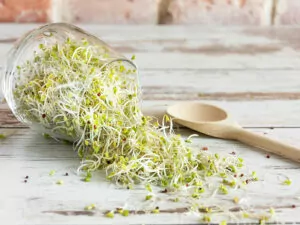
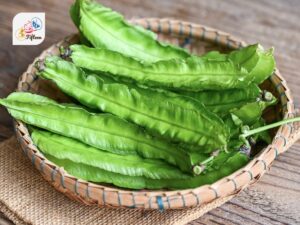
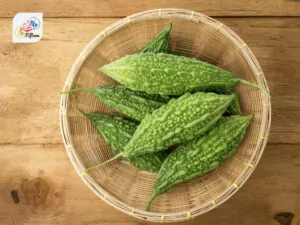
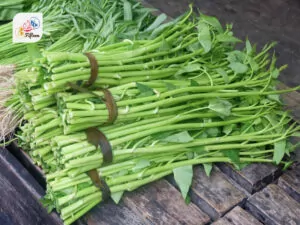
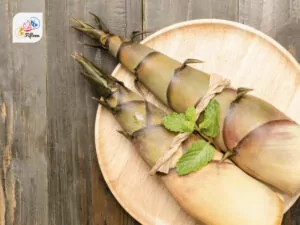
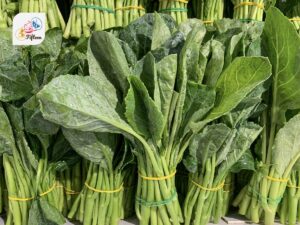

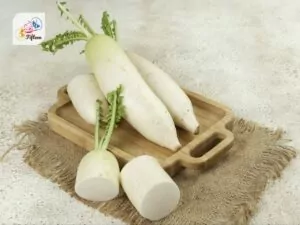
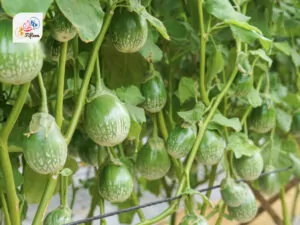
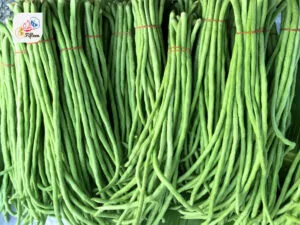
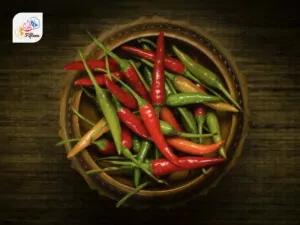
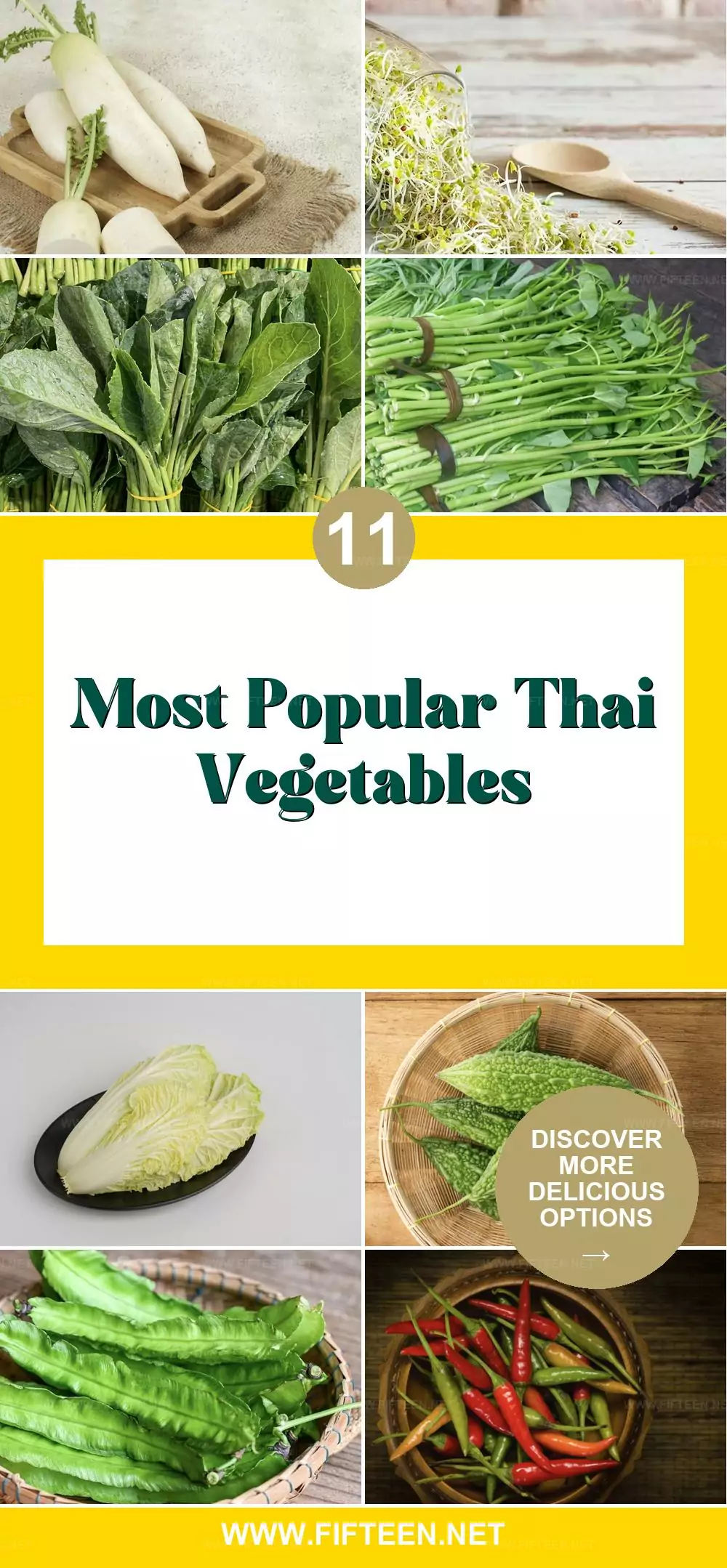
Jamie Scott
Editor in Chief, Senior Content Writer
Expertise
Home Cooking, Meal Planning, Recipe Development, Baking and Pastry, Food Editor, Cooking-video Maker, Western Food Evaluation Expert
Education
Le Cordon Bleu College of Culinary Arts
Local Community College, New York, NY
Jamie Scott is a skilled culinary expert and content creator specializing in Western cuisine. With over 15 years in the culinary field and formal training from Le Cordon Bleu, Paris, Jamie deeply understands how to blend nutrition with delicious flavors. His passion for cooking matches his commitment to making healthy eating accessible and enjoyable.
On Fifteen.net, Jamie brings a fresh perspective to classic dishes and beverages, offering readers insightful recipes, cooking tips, and a fresh view on meal planning that emphasizes taste, health, and simplicity.